 How many people do you know have kicked off the new year “dieting” to lose weight?
How many people do you know have kicked off the new year “dieting” to lose weight?
They’ve given up sugar, carbs, fat, grains, meat, you name it…talk about deprivation!
We have a MUCH different suggestion.
What if you decide to get healthier, (AND lose weight if you want to), NOT by giving up and removing but rather, by ADDING one new SUPER food every month this year? And, what if, during that month, you make it a game to try that new food several different ways? Then, by the end of the month, you will be an expert at serving it, know your favorite ways of enjoying it, and hopefully have laid down the habit of regularly buying and consuming it! Let’s face it, this kind of “New Year’s resolution” is so much better (and more fun) than dieting or deprivation! Plus, it can do a lot to supercharge your metabolism, decrease your calorie intake for steady weight loss, fend off diseases, and make you look and feel great!
For January, we are starting with an “everybody’s talking about it” leafy green whose amazing features make even broccoli and spinach green with envy. What is it? Kale! Whether you already love it and eat it often, or have only had it once, twice or maybe never, now’s your chance to make it a tasty staple in your house!
Here’s the challenge.. serve kale at least one day a week for the entire month in ALL kinds of different ways.
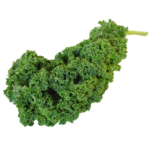 Get your whole family involved and vote…is it a “keeper” or “sleeper?” From salads, soups, smoothies and stir-fries, we are confident you will find some great, new kale recipes to incorporate into your rotation!
Get your whole family involved and vote…is it a “keeper” or “sleeper?” From salads, soups, smoothies and stir-fries, we are confident you will find some great, new kale recipes to incorporate into your rotation!
What is kale?
Kale is a leafy green and part of the cabbage or “cruciferous” family (think superior cancer fighters) along with broccoli, cauliflower, Brussels sprouts and others.
Kale comes in several varieties:
 Curly leaf kale – bright green and has tight ruffled looking leaves. This variety is typically the most common sold in bunches at the store.
Curly leaf kale – bright green and has tight ruffled looking leaves. This variety is typically the most common sold in bunches at the store.- Lacinato kale (or Dinosaur or Tuscan kale) – more flat leaf, with dark blue-green leaves and a slightly wrinkled texture.
- Redbor kale – resembles the curly leaf kale, but the entire plant is dark red or dark purple. It is edible, but almost too pretty to eat!
- Red Russian kale – typically the sweetest variety of kale, it has reddish-purple stems and flatter leaves that might resemble large arugula leaves.
Why kale?
 It tops the charts on nutrition! It fights every disease we are currently facing: Alzheimer’s, cancer, heart disease, diabetes, depression, arthritis, osteoporosis and obesity, just to name a few.
It tops the charts on nutrition! It fights every disease we are currently facing: Alzheimer’s, cancer, heart disease, diabetes, depression, arthritis, osteoporosis and obesity, just to name a few.- One cup of raw kale, with only 33 calories, is loaded with Vitamin C, Vitamin A, and Vitamin K, which is a powerful antioxidant and bone builder.
- It is rich in Omega 3 fatty acids, which help fight inflammation (which is a significant contributor to many diseases).
- Studies have shown the calcium absorption from kale is superior to that of milk!
- Kale is also a great source of protein, iron, folate, and Vitamin B6 which helps our brains — both a fantastic brain AND body food!
How do you select and store it?
- Look for leaves that have a rich, dark green color (or dark red/purple for the Redbor variety)
- Avoid leaves that are yellowing or wilted
- Smaller leaves are often more tender
- Kale will store well in the refrigerator for several days. You can store in a plastic bag with as much air removed as possible.
 Freeze the leaves! Simply rinse, pat dry, cut the leaves from the stems and store the leaves in freezer bags.
Freeze the leaves! Simply rinse, pat dry, cut the leaves from the stems and store the leaves in freezer bags.- A great characteristic of kale is that the leaves become slightly sweeter after a cold spell or a frost. If you are lucky like Zonya and have lots of fresh, end-of-the-season kale, you can freeze it and enjoy it all winter long!
How do you prepare it?
Kale has mild taste and is fantastic, especially when prepared with the right combination of other ingredients! When a recipe calls for “kale”, most of the time any variety will work great…you decide which is your favorite!
Here are a few tips to get you started:
- Devein the kale! If you buy kale in a bunch, it is best to cut the leaves from the stems because the stems of kale can be very tough. Simply tear the leaves from the stem or use a knife and cut lengthwise to separate the leaves from the stem. You can then chop the leaves and then discard the stems.
 Massage your kale! It may sound really strange, but when eating kale raw such as in salads, the key to softening the leaves is to add dressing (such as a vinaigrette – our favorite combo…3:1 ratio of oil and vinegar) and massage this dressing into the leaves (using your hands works great). Letting the dressing sit on the kale for 10 minutes to one hour will soften it and make it absolutely delicious! We have taken kale salads to company events and have heard “this must be a different kind of kale because the kale I tried was tough and chewy!” Massaging the kale really does make a difference in texture and taste!
Massage your kale! It may sound really strange, but when eating kale raw such as in salads, the key to softening the leaves is to add dressing (such as a vinaigrette – our favorite combo…3:1 ratio of oil and vinegar) and massage this dressing into the leaves (using your hands works great). Letting the dressing sit on the kale for 10 minutes to one hour will soften it and make it absolutely delicious! We have taken kale salads to company events and have heard “this must be a different kind of kale because the kale I tried was tough and chewy!” Massaging the kale really does make a difference in texture and taste!- Add kale to soups, sautéed vegetables or stir fry dishes. The incredible thing about kale is it won’t shrink up and wilt like spinach when added to hot dishes.
- Crunchy kale chips! By tossing chopped kale with a little olive oil and salt, the oven will work its magic and to turn bite size pieces of kale into crunchy chips that will melt in your mouth. Any type of kale will work for kale chips but curly kale ends up having a fantastic crunch!
- Boost the nutrients in your smoothie! Add kale to your smoothie – the Mango Mint Green Smoothie is a fantastic one to try!
Too much of a good thing?
As you can see, kale is absolutely wonderful! However, certain people may want to be careful not to go overboard. For example, if you take a blood thinner or have an issue with blood clotting, contact your physician before increasing your kale intake because the high concentration of Vitamin K can interfere with some anti-clotting medications. Also, anyone with kidney or gallbladder problems should consult a nutritionist or physician regarding the appropriate amount of kale to include in their diets.
Try any of these incredibly great ideas to add kale to your Superfood challenge for January!
 Salads:
Salads:
Soups:
Stir-Fries:
Kale Pesto:
Or more!
You can find even more ideas by typing “kale” into the recipe search bar at www.eatrealamerica.com!
Share with us! Send us your favorite recipes using kale…we would love to share these ideas with others in the Eat REAL America community!
 LEARN MORE ABOUT THE NAPKIN!
LEARN MORE ABOUT THE NAPKIN!
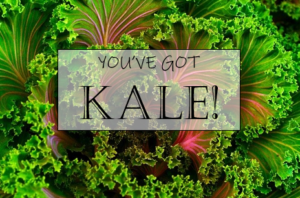
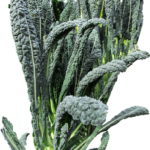

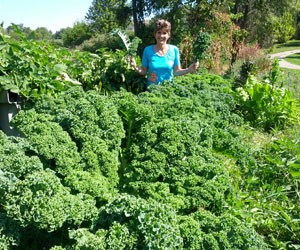
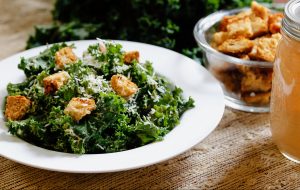

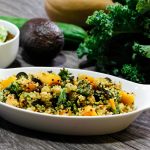

Sorry but I am not going to massage any food product. Ha! BArb
Barb – we thought that too! Seemed crazy at first but we quickly realized “massaging” is a game changer!
I can not wait to see what the class thinks this week! I hope they will taste a difference, I think Kale needs to be massaged! Have seen lots of recipes for my box with Kale, thanks.
We completely agree – massaging kale is the game-changer in making it taste fantastic! Please let us know what everyone in your Eat REAL for Your Health class thinks! Thank you!
I’m curious…
If you haven’t already, try kale and tell us what you think! Massaging it is definitely one of our favorite ways to enjoy it — definitely improves the flavor and texture and makes it taste incredibly good!